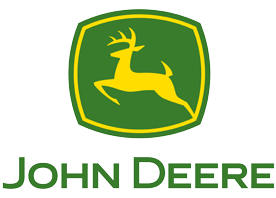Rule number one of tractor ownership: Don’t tip your tractor. Uneven ground or unfamiliar attachments - really anything that causes a shift in the center of gravity of your equipment - pose a potential tipping danger - and unfortunately, overturning your tractor is the leading cause of fatality on farms in the United States. Enter the ballast. This vital addition keeps the weight of your tractor plus the load you’re carrying safely and evenly distributed (which also extends the life of your tires and front-wheel-drive axle). The real question then isn’t “why do I need a ballast,” it’s “what kind of ballast do I need?”
CALCULATING OPTIMAL BALLAST
Your ballast needs will change based on the attachment and project, so be sure to read the owner’s manual. Ultimately, the goal is to limit wheel slip to 10-15%. What’s wheel slip? Calculate it using the following formula:
(10 tire revolutions with load) – (10 tire revolutions without load) x 100/ (10 tire revolutions with load)
Simply put, if the wheel slip is more than 15%, add a ballast; if it’s less than 10%, remove weight until it’s within optimal range. It’s just as important to remove the ballast when it’s not necessary because too much weight leads to excess fuel consumption and inefficient operation
BALLAST OPTIONS
Tractor Ballast Box
A ballast box for your compact tractor is one of the more versatile balance options for your John Deere Tractor. It adds the weight you need without taking up much space and is easily removed. You can use materials like sand, gravel, rocks, dirt, steel plates, cement, or concrete as filler depending on how much weight you need.
Suitcase Weights
Suitcase weights are individual pieces of cast iron available in 42- or 70-pound weights. They’re easy to use and, because of the design, you don’t have to bolt it onto the tractor. John Deere’s suitcase weights, Quick-tach weights, have a handle and a notched design that safely locks onto a built-in front-end or rear-end bracket. John Deere also carries Quick-tach Heavy Hitch weight brackets, so you can safely use up to eight suitcase weights at a time.
Wheel Weights
Front or rear wheel weights are cast iron or hard plastic shells filled with sand or concrete. Although it’s not as easy to add wheel weights compared to the ballast or suitcase weights, they don’t interfere with the use of attachments. It’s a complicated process, so many owners consider them a semi-permanent solution and leave them on year-round.
Liquid Tire Ballast
Some tractor owners choose the economical liquid tire ballast, using either water or a calcium chloride solution depending on the climate. Keep in mind, however, this reduces ride performance because it increases tire pressure if you don’t adjust accordingly. To ensure stability, it’s important to use the same amount of liquid in each of the front or rear tires.
Having a hard time deciding which of these ballasting options is best for you? Visit your nearest Papé Machinery John Deere dealer to speak to an equipment expert about ballasting options for your compact tractor and intended applications.









